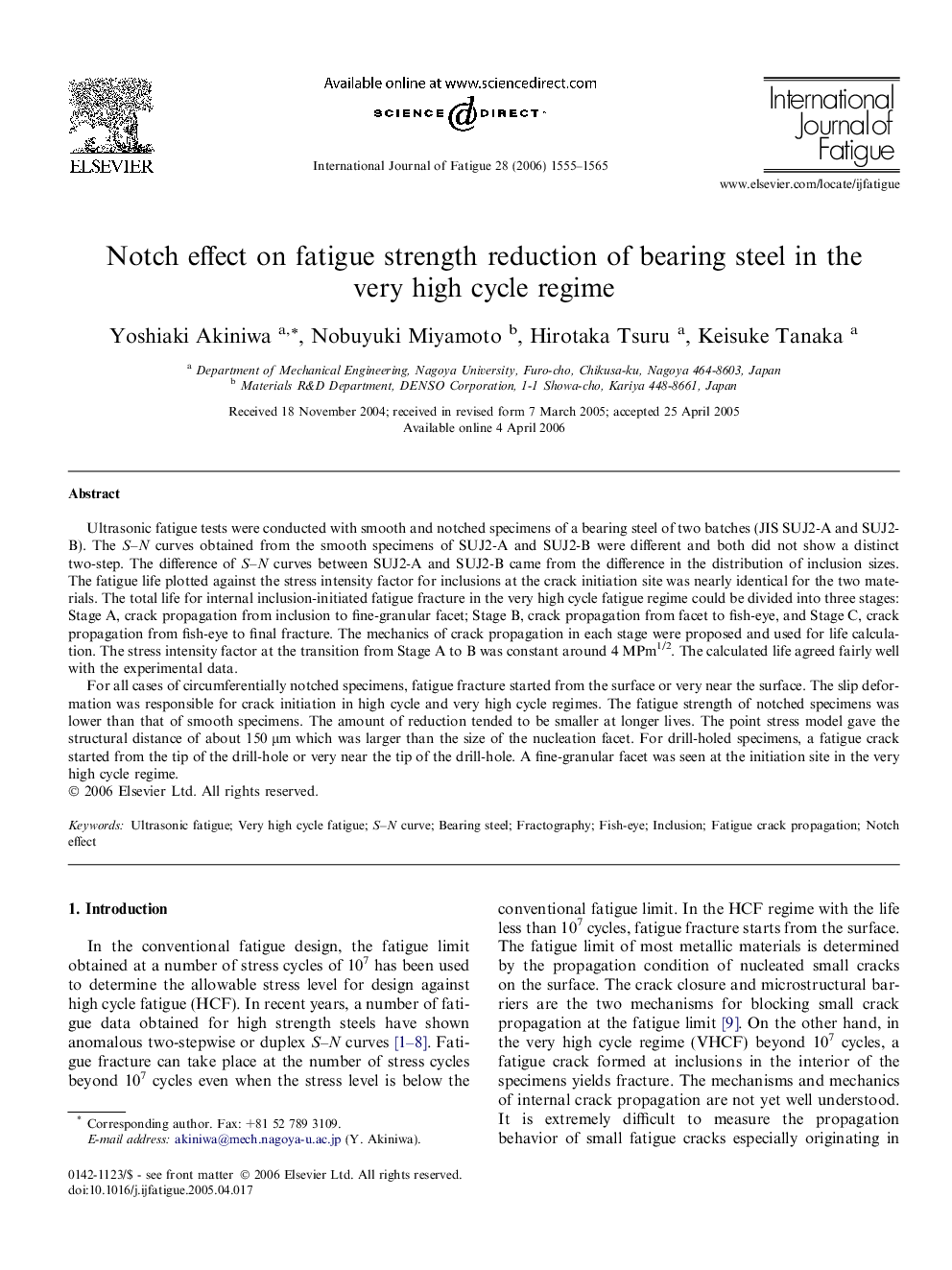| Article ID | Journal | Published Year | Pages | File Type |
|---|---|---|---|---|
| 778653 | International Journal of Fatigue | 2006 | 11 Pages |
Ultrasonic fatigue tests were conducted with smooth and notched specimens of a bearing steel of two batches (JIS SUJ2-A and SUJ2-B). The S–N curves obtained from the smooth specimens of SUJ2-A and SUJ2-B were different and both did not show a distinct two-step. The difference of S–N curves between SUJ2-A and SUJ2-B came from the difference in the distribution of inclusion sizes. The fatigue life plotted against the stress intensity factor for inclusions at the crack initiation site was nearly identical for the two materials. The total life for internal inclusion-initiated fatigue fracture in the very high cycle fatigue regime could be divided into three stages: Stage A, crack propagation from inclusion to fine-granular facet; Stage B, crack propagation from facet to fish-eye, and Stage C, crack propagation from fish-eye to final fracture. The mechanics of crack propagation in each stage were proposed and used for life calculation. The stress intensity factor at the transition from Stage A to B was constant around 4 MPm1/2. The calculated life agreed fairly well with the experimental data.For all cases of circumferentially notched specimens, fatigue fracture started from the surface or very near the surface. The slip deformation was responsible for crack initiation in high cycle and very high cycle regimes. The fatigue strength of notched specimens was lower than that of smooth specimens. The amount of reduction tended to be smaller at longer lives. The point stress model gave the structural distance of about 150 μm which was larger than the size of the nucleation facet. For drill-holed specimens, a fatigue crack started from the tip of the drill-hole or very near the tip of the drill-hole. A fine-granular facet was seen at the initiation site in the very high cycle regime.
